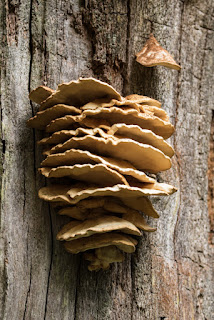With the
cancellation of the previous field meeting at Taddiford Gap, the Sunday
birdwalk became the first outing of the winter programme. The day after New
Moon and approximately 2 hours before high water, Brian + 8 set off from
Keyhaven following the Brent Trail anticlockwise. On a glorious morning there
was much activity - both avian and human. We were accompanied throughout by the
aerial displays of myriad Swallows and House Martins.
 |
| Osprey |
At Keyhaven Turnstones
had returned for the winter to use various moored vessels to rest at high tide
and Brent Geese had returned to the saltings. Looking across Keyhaven Marsh a
Sparrowhawk was mobbed by corvids, but that paled to insignificance when an
Osprey (left) suffered the same fate! In fact we had several sightings of the latter
during the walk including it, or a different individual perhaps, which flew east
over the Old Tip.
 |
| Black Swan flanked by two Mute Swans |
At Iley Point we
found Dartford Warblers and Wheatears, whilst nearby at Keyhaven Lagoon a Black
Swan (right) happily consorted with Mute Swans. The high tide forced many shorebirds
off the saltings to roost on the lagoon's mudbanks including a large number of
Black-tailed Godwits a few Grey Plover, Dunlin and Knot. An immature Ruff
lurked along the lagoon’s rushy edge as a Kingfisher sped by. Wildfowl included
Shelduck and Pintail.
 |
| One of Brian's Kestrels |
It seemed that almost every post along the route offered
a vantage point for a Kestrel (below). At Fishtail
Lagoon a Grey Heron attempted to swallow a large uncooperative eel. Sue spotted
a soaring female Marsh Harrier high above us and shorebirds on and around the
lagoon added Golden Plover and Spotted Redshank to the ever growing list. Two
Black-tailed Godwits wore colour rings from Peter Pott's ongoing research into
the Icelandic race birds that winter along the Solent.
Along the Old
Tip Cetti's Warblers were singing and a Common Buzzard passed overhead before
we walked along the Ancient Highway to the Western Balancing Pond, where
amongst a variety of wildfowl Shoveler were seen in eclipse plumage.
It was a morning
that will take some beating with some 65 species of birds noted. There were
more than just birds to see for we recorded Grey Seal, Roe Deer, Red Admiral
and Painted Lady butterflies and a number of unidentified hawker dragonflies.








